Solutions
Horse Construction offers full range of structural strengthening materials with technical supports, documentation supports, products supports, project supports.
The purpose of bonding CFRP wrap is to reinforce the engineering structure. The construction precautions are: the direction of force must be determined. The direction of bonding fibre cloth is consistent with the direction of force and can not be mistaken. Fiber cloth must be laid flat, not fold, not bend. The impregnating glue must be soaked by special rolling wheels and the air bubbles must be eliminated.
Construction process and profile of CFRP retrofitting
1.1. Flow chart of FRP strengthening
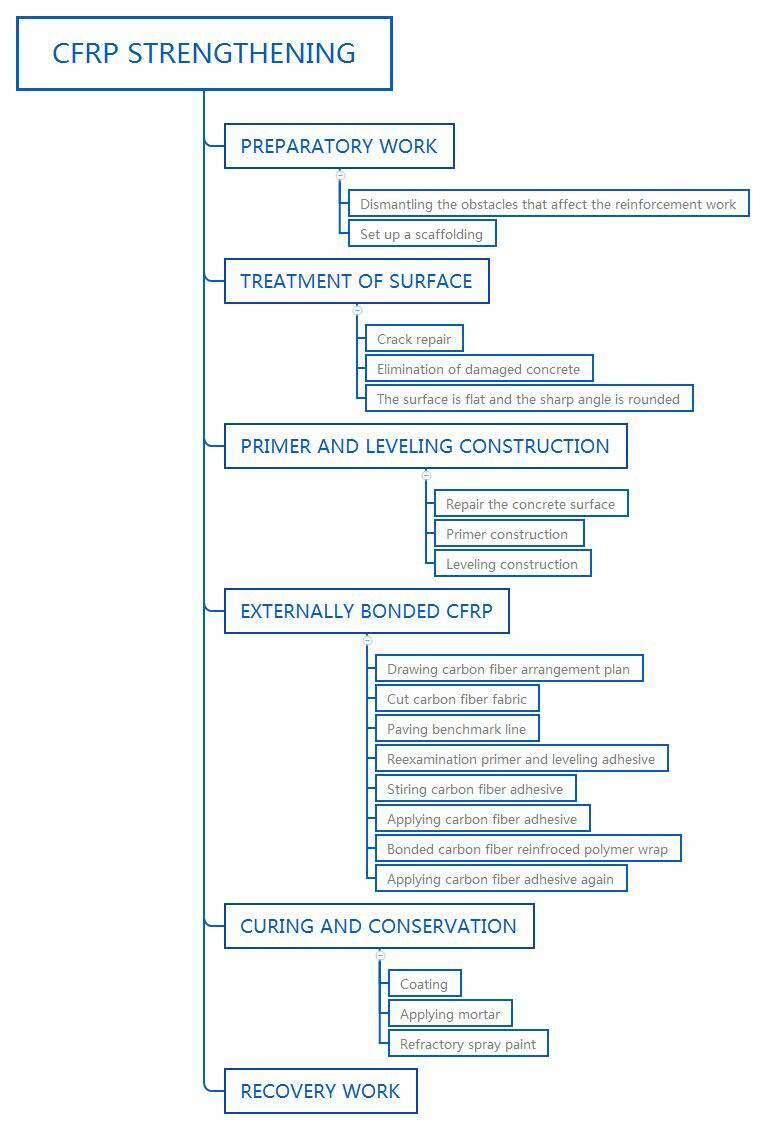
1.2. FRP Construction Profile
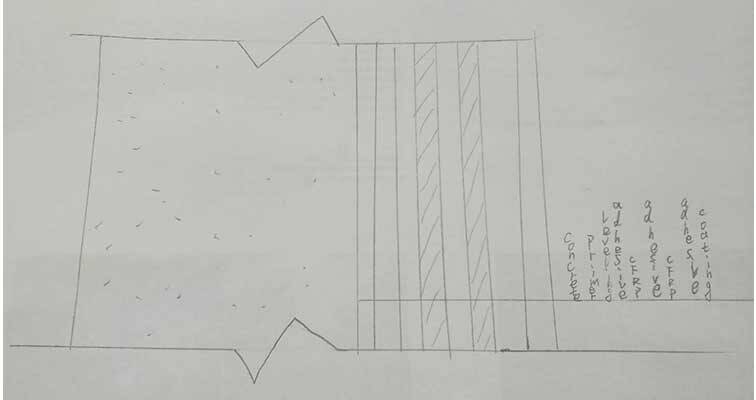
2. Construction Procedures and Technologies of CFRP Strengthening
2.1 Surface treatment of reinforced concrete
(1) Surface treatment should achieve three objectives: to ensure that the structure body and the fiber cloth are firmly bonded, to remove rust, decontamination, and to purify the aging parts of the concrete surface; to use structural adhesives to repair cracks, fill holes, adjust height difference, and cut sharp corners, so as to ensure that the carbon fiber cloth is bonded to a reliable base.
(2) The exposed part of the reinforcing bar should be treated with anti-rust treatment. If the damage is serious, measures should be taken to remedy it.
(3) Crack repair. If the crack is more than 5 mm, the high-strength cement mortar is used to pour; the crack width is more than 0.1 mm and less than 5 mm. The special chemical crack filling glue is used to pour the crack. The crack is mainly injected at low pressure and slowly, and the grinding modification is flat after curing. The crack width is less than 0.1 mm, and the sealing glue is used to seal the crack.
(4) Surface repair: If there are defects, holes or honeycomb linen on the bonded concrete surface, repair glue should be used.
(4.1) Repair of defects or holes. In the construction of the original structure or in the later period of operation, the structure will have the defects, holes and honeycomb linen surface, which must be repaired with repairing glue.
(4.2) Height adjustment. Because of the high and low surface of concrete caused by the dislocation of formwork, it must be repaired before bonding fibers. Large area can be repaired with high strength mortar, while local position can be repaired with repair glue.
(5) Surface dirt and carbide treatment. By means of disc grinder, sand blasting and high-pressure water washing, the surface is treated to a flat, regular, non-loose, non-fragile and non-dirty surface. Oil and grease contaminants are degreased with neutral detergent, dust is removed by high-pressure air gun, and the concrete surface before bonding fibre cloth must be fully dried.
(6) Angle trimming. In order to prevent fibre cloth from peeling or pulling up easily when bonding, fillet can be repaired with repairing mortar, and fillet radius R should meet the requirements of specifications. For prismatic or sharp convex structure, the fibers at the sharp corners will have greater stress concentration, which will easily break the carbon fibers, so it must be treated. The edges and corners can be modified into an arc of radius R by a grinder. Surface modification with repair glue and detection with arc gauge ensure that the modification angle radius R meets the requirements of specifications (special structure according to relevant specifications).
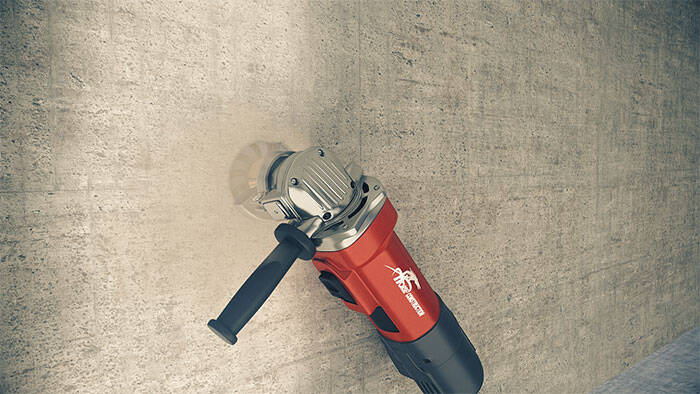
2.2 Primer coating
(1) The purpose of using base glue is to strengthen the bond between concrete and fibre cloth or repair glue. The base glue can be immersed in concrete and increase the surface strength of concrete.
(2) Environmental temperature, humidity and drying degree of concrete surface affect the bonding performance of bottom bond. Construction environment temperature should not be lower than 5 C, humidity should not be higher than 85%, and the drying condition of concrete surface moisture content should be less than 10%.
(3) The amount of glue should not be too much at one time, and it should be used up within 45-60 minutes after the preparation in general; the glue should be stirred by low-speed mechanical stirring, which may heat up during stirring, and the stirring time should not be too long, and 3 minutes is the appropriate time.
(4) Roller brush is used to coat glue evenly. The amount of coating depends on the type of base glue and the surface condition of concrete. The concentration of base glue is low, and the general dosage standard is 0.25-0.3kg/m2. The base glue should be coated 1-2 ways. If the concrete is seriously carbonated and the amount of soaking is large, the number of times of coating should be increased. After the drying is confirmed by finger contact, the next process (which usually takes a day to maintain) is continued.
2.3 Repairing glue for repairing concrete
(1) The purpose of using repairing glue is to ensure that the construction surface is smooth and there is no bubble bulging between the concrete surface and the fibre cloth. The concave-convex, holes and height difference of the concrete surface should be repaired.
(2) The base glue should be repaired immediately after drying. If the time interval is more than 10 days, the surface should be polished with sandpaper before using the repairing glue. In case of honeycomb linen surface, the concrete surface should be fully coated and repaired. The dosage varies according to the surface condition. The general dosage is 0.5-1.5 kg/m2. Usually curing for 24 hours, confirm curing and then continue the next process. When air bubbles occur on the construction surface of repairing glue due to the internal gas of concrete, the air bubbles are ground flat by an angle mill.
2.4 Impregnating glue undercoat
(1) The purpose of applying impregnating adhesives is to bond concrete to fibre cloth. Construction Notes: The impregnating glue must be fully immersed. The special rollers are used to roll the fibre cloth in one direction. The arch and corner parts are prone to air retention. The special toothed defoaming drum is used to remove the retained air.
(2) Curing time, the mixing amount of each glue should be calculated according to the coating area in the construction time, and the mixing must be sufficient. Special attention should be paid to the difficult mixing place at the bottom corner of the mixing vessel.
(3) The coating should be uniform, the amount of glue should be based on the soaking fibre cloth, and the glue should not be too much. The excess glue should be extruded by special equipment. The amount of glue should be different depending on the surface condition of concrete and the specifications of fibre cloth. The general amount of glue used for one layer is 0.5-0.7kg/rn2.
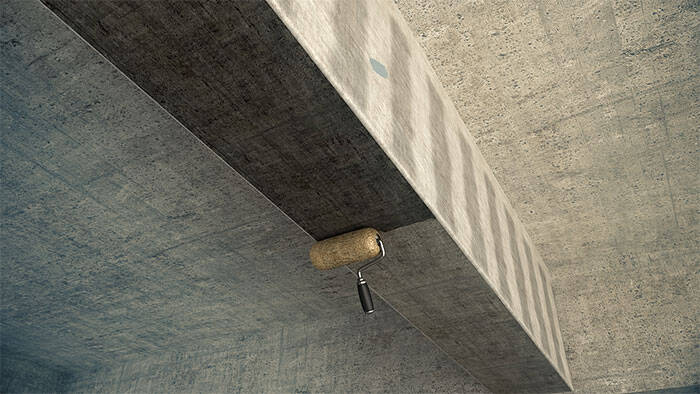
2.5 Sticking fibre cloth
(1) The purpose of bonding fibre cloth is to reinforce the engineering structure. The construction precautions are as follows: the direction of force must be determined, and the direction of fibre bonding is consistent with the direction of force and can not be mistaken; the fibre cloth must be laid flat, not folded, not bent; the impregnating glue must be rolled and soaked with a special rolling wheel, and the air bubbles must be eliminated.
(2) Cutting dimension should include overlapping parts in both vertical and horizontal directions. Cutting carbon fibers can not be folded. Before pasting, they must be rolled on a round roll with radius R (> 80mm) to avoid damage. If the cut fabric is not used up on the same day, it should be sealed and stored in a dustless, dry and sunless place.
(3) Fiber cloth must be pasted along the positioning line. Multilayer pasting should be carried out layer by layer. The second layer must be pasted after the first layer is solidified. Multilayer fibre cloth must not be pasted once. When many pieces of fibre cloth are pasted in one place, one piece of the center should be pasted first and then extended to both sides. When the fibre cloth is pasted at the outer convex corner, the fibre cloth should not be damaged by breaking. When pasting the concave angle, the rubber roller with the same radius is used to extrude the concave angle, so as to avoid the pulling force to make the fiber location at the concave angle. When rolling, roll along the direction of force, do not force back and forth.
(4) Fiber lap length. In general, the direction of fibre is 100 mm (in Japan, the road engineering and residential engineering is 200 mm). There is no need to overlap between the two pieces in the vertical direction of the fibers (there is also a requirement to overlap more than 30 mm). In the middle of the pasted fabric area, if there are openings, iron plates and other obstructions, the cutting of the fabric should be planned beforehand, and the weakened parts should be prepared for reinforcement.
(5) Maintenance. In order to prevent rain and dust from adhering to fibre cloth during outdoor construction, it is necessary to use plastic cloth for maintenance. After bonding the fibre cloth, cover it with plastic cloth for more than 24 hours for maintenance. The initial curing time is about 2 days when the average temperature is below 10 C, and the initial curing time is about 1-2 days when the average temperature is 10-20 C. The initial curing time is about 1 day when the average temperature is above 20 C. Complete curing requires a long time. Generally, more than 80% of the cured material can be subjected to force. The average temperature should be solidified for 7 days when the temperature is above 20 and 14 days when the temperature is above 10 before it can be used under force.
2.6 Impregnating Adhesive Coating
(1) Purpose: Surface protection or preparation for bonding of the next layer of fibre cloth.
(2) After coating and before curing, check whether the fabric is floating, bulging or peeling. If so, it should be repaired immediately.
(3) Floating and bulging parts, before solidification, are rolled in the direction of fibers with defoaming roll to expel bubbles; if floating and bulging have solidified, exhaust holes can be opened and filled with syringe glue.
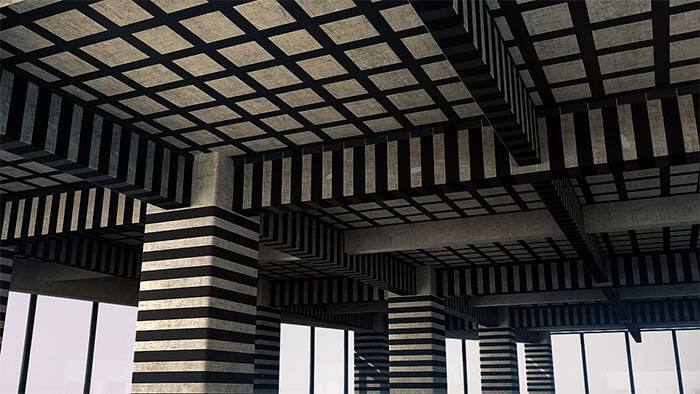
You can find anything here you are in need of, have a trust trying on these products, you will find the big difference after that.

High strength, unidirectional carbon fiber wrap pre-saturated to form a carbon fiber reinforced polymer (CFRP) wrap used to strengthen structural concrete elements.
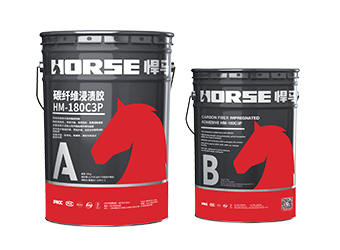
Good impregnation carbon fiber adhesive for applying carbon fiber reinforced polymer(CFRP) wrap for structural strengthening

High strength, unidirectional carbon fiber sheet pre-saturated to form a carbon fiber reinforced polymer (CFRP) sheet used to strengthen structural concrete elements.